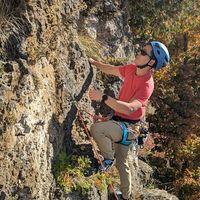The beauty is in the simplicity. A hunger fed by nature, a modern way of experiencing nature. We were driven out there for different reasons—some of us introduced to rock climbing at a young age, in a responsible manner. For others, including myself, it was trial by fire. note: this is an excerpt from American…
https://climbingzine.com/climbing-mount-analogue-an-excerpt-from-american-climber/
 D devnull moved this topic from Uncategorized on
D devnull moved this topic from Uncategorized on